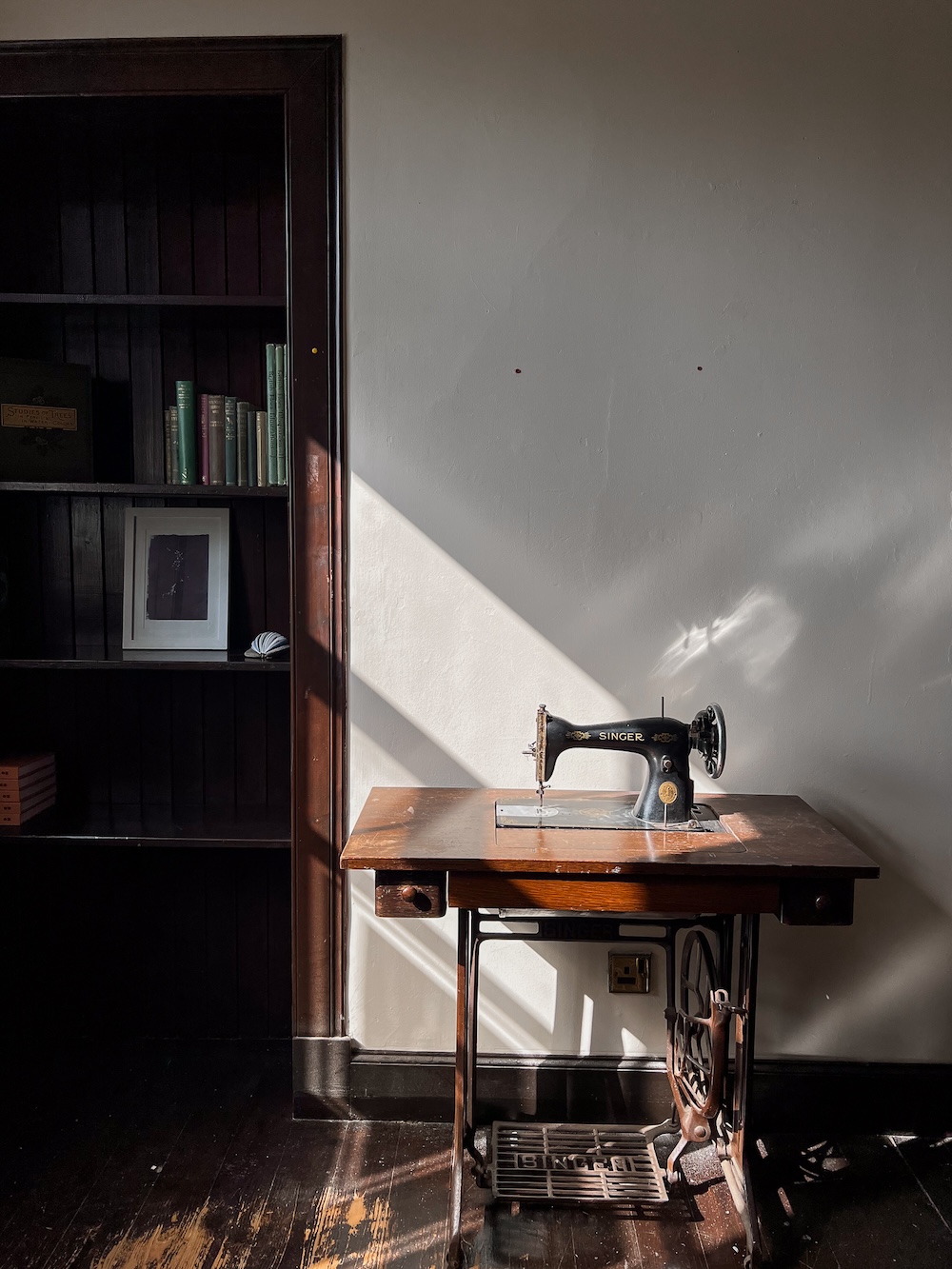
The Scottish Maritime Museum on Irvine Harbourside has collaborated with The Nature Library to create a permanent home for the innovative and, until now, touring pop-up collection of land and environment writings.
The Nature Library, which was founded in 2019 by Ayrshire-based artist, photographer and writer Christina Riley, is now housed in one of the Museum’s shipyard worker tenement flats at 122 Montgomery Street.
As well as enjoying the carefully curated works connecting readers to land, sky and sea at the library, visitors will also be able to borrow books. The Nature Library will also offer a regular programme of workshops, events and residencies and feature a dedicated children’s area.

Christina Riley writes:
‘I founded The Nature Library when I recognised that books by authors like Rachel Carson, Kathleen Jamie and Nan Shepherd were having a significant impact on my work as an artist and my actions in day-to-day life. I wanted to share books and stories like theirs which celebrate the natural world at a time when it needs our attention the most.
Ever since the first pop up in 2019, I’ve been dreaming of a permanent space for the library. When I moved back to Ayrshire, I knew there was nowhere else I wanted it to be but Irvine Harbourside.
It’s an honour to collaborate with the Scottish Maritime Museum and exciting to bring the library to such a special location — the street itself is named after poet, journalist and social reformer James Montgomery, while the building has housed timekeepers, butchers, bakers, a seaman, an engineer and now a librarian!
Across the road is the Bogside Flats, a Site of Special Scientific Interest (SSSI), as well as the Garnock Estuary at Ardeer, where campaigners are calling for similar environmental protection, and these local habitats will inspire the collection.
The Nature Library also, importantly, brings one more library to the neighbourhood at a time when, despite increasing visitor numbers and studies proving that reading for leisure improves mental health, quality of life and life expectancy, more than 1 in 8 public libraries in Scotland have been forced to close since 2010.
I won’t pretend to understand the complexities of local and national budgets, but I know that these short-term financial gains can only lead to greater long-term losses. The value of libraries can’t always be quantified in financial terms (though estimates suggest that every £1 invested in libraries returns between £5 and £7, a return of between £5bn and £6bn a year for the UK economy), but the enduring benefits to the community are priceless, not to mention that the climate crisis affects all parts of our lives and an understanding of it is something that everyone is owed free access to.’

The Montgomery Street tenements were built in 1907 by William Breckenridge. They housed workers from his thriving sawmill on the street and shipyards across Irvine. Each house had its own water supply and an inside toilet on each half landing was shared by the occupants of two houses. The flats would have been considered very well appointed in the early 20th century.
Visitors to the Scottish Maritime Museum can also tour the other shipyard worker’s flat, which has been decorated as it would have been in the 1920s.
The Nature Library has toured across Scotland including visits to Civic House and The Project Café, Glasgow; The John Muir Trust Visitor Centre, Pitlochry; John Muir’s Birthplace, Dunbar; Isle of Mull’s Knockvologan Studies; Edinburgh’s Stills Centre for Photography; Birnam Arts, Perthshire; and Arran’s COAST Discovery Centre.
Find more information about The Nature Library, including opening times, via the Scottish Maritime Museum website, or Christina Riley’s website.